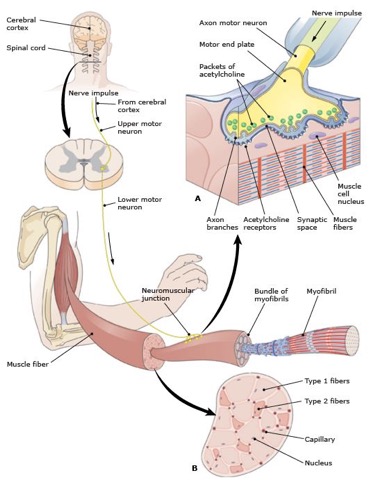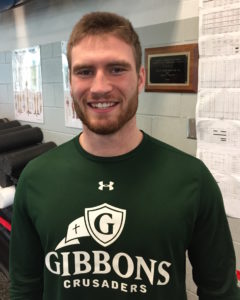
In chapter two of Athletic Movement Skills, Clive Brewer tackles the complexity of the Biomotor System and applies it to training athletes to enhance performance. His premise is simple yet compelling – train movement. What does this mean? Essentially, in order to maximize function (performance), you must first develop form. Form is another way of saying technique or posture (think postural control). By teaching proper movement patterns that orient joints in space correctly, the central nervous system will adapt accordingly. The specific adaptions will comprise of motor unit recruitment, increased myelination (increases speed of action potentials – quicker signals), and ultimately muscle fiber activation.
The science behind neuromuscular control and the interplay of the electrical and chemical energy that produces mechanical work can be overwhelming. That is why this chapter is so important; it is a well-articulated overview of how the neuromuscular system should be trained, in order to develop better athletes. The primary mechanism of teaching athleticism is consistently positioning the body in good posture. In other words, by consistently teaching where joints should be positioned, the muscles that control those joints will be activated more often. The motor units that control the muscle fibers will be activated as well. I am sure you have heard of Type I, II a, and II x muscles fibers and that in order for fibers to adapt they must be activated. Teaching proper movements means the motor units that control fibers will become more efficient, which leads to more efficient muscle contraction, that lead to more efficient movement. The cycle continues with the fibers being activated and adapting as well.
Therefore, the muscles are trained and adapt as the movement is taught – the movement pattern comes first though. Constantly activating poor movements patterns means poor movement will become habitual and muscle fiber adaptations will not be as efficient.

The Brain Controls Movement
- Start with Positioning (Posture) – Speed and Power will come.
- To adapt it must be activated.
- Proper adaptation comes from proper activation.
- It must be repeated… a lot.
- Patience is key – you cannot rush good technique. You are programming the brain after-all.
- Repeating good movement means good movement becomes second nature (you make your sport look easy)
- The Biomotor System is complex: it consists of bones, muscles, neurons, the Central Nervous System, and more. It is important to have a fundamental understanding of how it works.
Training movement will lead to muscular adaptions that will translate to better performance. The Biomotor system is essentially a high adaptable system that displays the concept that function follows form.

K. Hunter Byrd, NASM-CPT
I invite you to invite others to #JoinTheMovement toward better #AthleticMovementSkills! Our team including Coach Amer, Coach Cowick, Coach Blaser, and Coach Byrd, is ready for you to make your move!
Would you like to follow Morland STRENGTH’s link here: new Instagram account?
#MorlandSTRENGTH #AthleticMovementSkills #JoinTheMovement
“The views, opinions, and judgments expressed in this message are solely those of the authors and peer reviewers. The contents have been reviewed by a team of contributors but not approved by any other outside entity including the Roman Catholic Diocese of Raleigh.”
